Choose your specialty from the list below to see how our experts have tackled a wide range of client questions.
Looking for something specific? Utilize our search feature by typing in a key word!
Cancer Surveillance
When a patient comes in for head and neck cancer surveillance with severe xerostomia because of radiation therapy, and the physician does a complete workup for the xerostomia, and there is detailed documentation about the xerostomia, can we bill an E/M service along with the flexible laryngoscopy (31575)?
Question:
When a patient comes in for head and neck cancer surveillance with severe xerostomia because of radiation therapy, and the physician does a complete workup for the xerostomia, and there is detailed documentation about the xerostomia, can we bill an E/M service along with the flexible laryngoscopy (31575)?
Answer:
If the patient is seen for follow-up for head and neck cancer and they are also being treated for xerostomia you would be able to report a separate E/M service as long as the workup for the xerostomia is documented and treated or there is a change in plan of care to support the evaluation and management service.
*This response is based on the best information available as of 6/20/24.
CPT and ICD-10-CM Codes in Operative Notes
What is KZA’s perspective when a surgeon documents the CPT codes within the clinical operative note?
Question:
What is KZA’s perspective when a surgeon documents the CPT codes within the clinical operative note?
Answer:
KZA discourages using CPT and ICD 10 codes within the operative notes. While documenting details of each procedure is key within the operative report (both the header and within the body of the note), adding CPT and ICD 10 diagnosis codes creates an issue if the coding is incorrect. The operative report is part of the legal medical record, and payors may question the accuracy and validity of the entire report if the codes documented within the record are different than the codes billed. For this reason, we advise against documenting the specific CPT and ICD 10 codes within the operative report to prevent other denial and stall tactics.
*This response is based on the best information available as of 6/20/24.
Assistants at Surgery
We have surgeons who use their “Fellows” per their program as “Assistants at Surgery” and want to bill the corresponding codes under the “Fellow” with the “80” modifier. Is this OK?
Question:
We have surgeons who use their “Fellows” per their program as “Assistants at Surgery” and want to bill the corresponding codes under the “Fellow” with the “80” modifier. Is this OK?
Answer:
Under the current CMS guidelines, fellows are considered residents when practicing within their GME program, so their services as surgical assistants would not be billable. However, there are certain circumstances where a fellow may bill for their own services when practicing outside their GME program (e.g., in the Emergency Department, seeing patients as a primary physician (not in an orthopedic capacity). A Fellow in a private Fellowship and employed by the group practice is billable as a Fellow. These are non-GME-funded fellowships.
In an academic setting, we suggest that questions regarding fellow reporting be referred to Compliance for discussion and direction. CMS has very specific guidelines regarding moonlighting that can be found here: https://www.cms.gov/outreach-and-education/medicare-learning-networkmln/mlnproducts/downloads/teaching-physicians-fact-sheet-icn006437.pdf
*This response is based on the best information available as of 6/6/24.
Incision and Drainage (I&D)
My physician wants to know the difference between a simple and complicated I&D. I cannot find any specific guidance.
Question:
My physician wants to know the difference between a simple and complicated I&D. I cannot find any specific guidance.
Answer:
A simple or single I&D includes drainage of the pus or purulence from the cyst or abscess. The physician leaves the incision open to drain on its own, allowing for healing with normal wound care. A complex I&D includes placing a drainage tube to allow for continuous drainage or packing to facilitate healing. In certain cases, tissue excision, primary closure, and/or Z-plasty may be required. CPT code 10060 is a simple or single I&D and is typically reported when an abscess or cyst is opened with a surgical instrument, allowing the contents to drain. The lesion may be curetted and irrigated. CPT 10061 often involves larger abscesses requiring probing to break up loculations and packing to promote ongoing drainage.
You should report CPT code 10060 for incision and drainage of a simple or single abscess and CPT 10061 for complex or multiple cysts. Complex or multiple cysts may require surgical closure at a later date.
*This response is based on the best information available as of 6/6/24.
Acupuncture
We are having trouble getting our acupuncture claims paid, can you advise if this is covered per Medicare and other payors?
Question:
We are having trouble getting our acupuncture claims paid, can you advise if this is covered per Medicare and other payors?
Answer:
In general, many payors do not cover acupuncture. Therefore, it is the patient's responsibility to pay. Check your payor policies regarding coverage criteria.
Medicare recently released Decision Memo for Acupuncture for Chronic Low Back Pain (CAG-00452N). https://www.cms.gov/files/document/mm13288-national-coverage-determination-3033-acupuncture-chronic-low-back-pain.pdf
CMS will cover acupuncture for chronic low back pain – up to 12 visits in 90 days under the following circumstances:
For the purpose of this decision, chronic low back pain (cLBP) is defined as: Lasting 12 weeks or longer; nonspecific, in that it has no identifiable systemic cause (i.e., not associated with metastatic, inflammatory, infectious, etc. disease); not associated with surgery; and not associated with pregnancy.
An additional eight sessions will be covered for those patients demonstrating an improvement. No more than 20 acupuncture treatments may be administered annually.
Treatment must be discontinued if the patient is not improving or is regressing.
Refer to Medicare’s coverage policy for the type of provider that may furnish the service and for other information.
*This response is based on the best information available as of 6/6/24.
Cryoablation
I was told we still need to use the unlisted code 30999 for cryoablation of the nasal nerve.
Question:
I was told we still need to use the unlisted code 30999 for cryoablation of the nasal nerve.
Answer:
You no longer report cryoablation of the nasal nerve with an unlisted code. In 2024, a new code was created to report Nasal cryotherapy (31243), also known as nasal cryoablation or cold therapy, as a noninvasive treatment to stop symptoms of chronic rhinitis.
*This response is based on the best information available as of 6/6/24.




